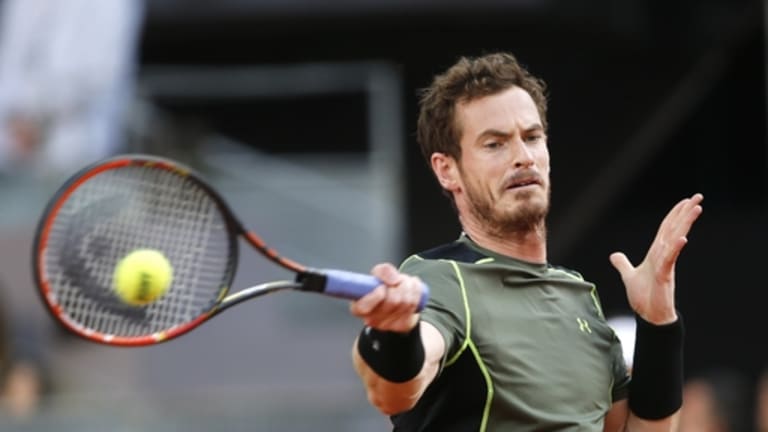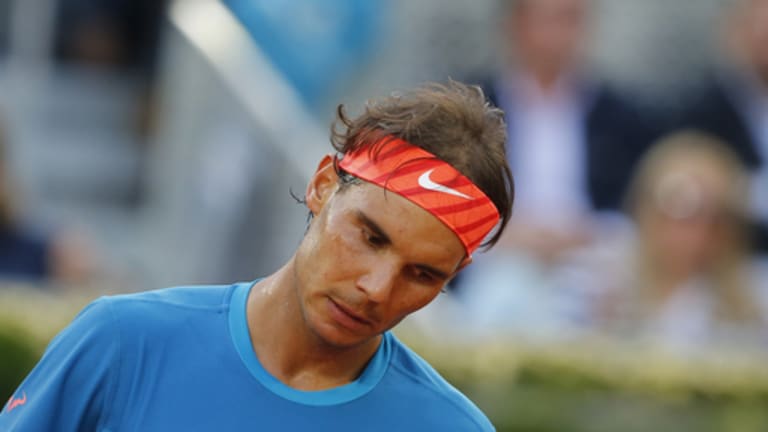Verdasco in Cincinnati 2011. Federer in London later that year. Djokovic in Miami 2014. These are matches that most Rafael Nadal fans have, for the sake of their health, carefully blocked from their minds. They can add another to the list today: Nadal’s mercifully brief 6-3, 6-2 defeat at the hands of Andy Murray in the Madrid final. Even Rafa said he was going to “delete” this one from his memory banks as soon as possible.
Nadal was profoundly out of rhythm from the first point, which he lost by burying a forehand in the bottom of the net, to the last point, which he lost by doing pretty much the same thing. He committed 26 unforced errors, 10 more than Murray, but the number still feels low. Maybe that's because these weren’t just errors. They were wild, no-chance shanks that, when they weren’t fluttering harmlessly into the net, caromed well past the baseline and outside of the doubles alleys.
The match from Rafa’s perspective was best summed up by the return he made—or failed to come close to making—at 30-30 in the final game. With one last chance to break and put some pressure on his opponent, he took a big cut at a forehand...and nearly launched it into the audience behind Murray. All Nadal could do at that point was laugh. I’d say it was one of those days for Rafa, except that I’ve never seen him have a day like this on clay before.
Of course, one fan’s debacle is another fan's miracle. For Murray and his supporters, this is a match to preserve and rewind in future years. Six days after winning the first clay-court title of his career, in Munich, he has now won a Masters event on the surface, and beaten Nadal on it for the first time in seven tries. Like Nadal’s stats, Murray’s—11 winners, 14 errors, 60 percent first serves in—were surprisingly ordinary. But it’s the low number of errors that tell the tale for him.
Even as Murray’s confidence and aggression grew, his consistency didn't suffer. As the match progressed, he wasn’t afraid to slug his backhand, attack his returns, and change directions and hit up the line with both of his ground strokes, all of which kept Nadal off balance. In the past—think Wimbledon 2011 and Rome last year—Murray has taken control early against Rafa, only to miss a couple of key shots, begin to doubt his strategy, and go back into his defensive shell. This time he never retreated. This time when Murray missed what could have been a key shot—with a chance to break for 3-0 in the second set, he drilled an easy swing volley into the net—Nadal was there to bail him out by putting a backhand in the bottom of the net on the next break point.
"I think I wasn't expecting this a couple of weeks ago," said Murray, who got married last month, "so when things are unexpected, it feels nicer. I didn't feel like I put too much pressure on myself the past couple of weeks."

